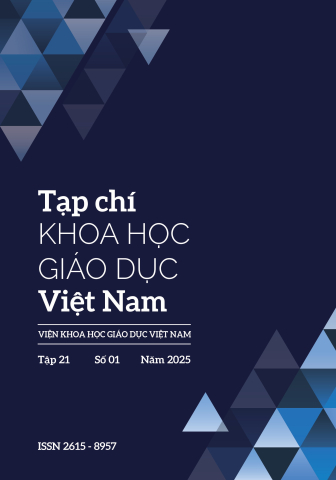[1] Chương trình Giáo dục Mầm non (Ban hành kèm theo Thông tư số 17/2009/TT-BGDĐT ngày 25 tháng 7 năm 2009 của Bộ trưởng Bộ Giáo dục và Đào tạo và thông tư 28/2016/TT-BGDĐT ngày 30 tháng 12 năm 2016 của Bộ trưởng Bộ Giáo dục và Đào tạo sửa đổi, bổ sung một số nội dung của Chương trình Giáo dục Mầm non ban hành kèm theo Thông tư số 17/2009/TT-BGDĐT ngày 25 tháng 7 năm 2009 của Bộ trưởng Bộ Giáo dục và Đào tạo.
[2] Nguyễn Như ý, (1998), Từ điển tiếng Việt thông dụng, NXB Giáo dục, Hà Nội.
[3] Vũ Dũng, (2008), Từ điển Tâm lí học, XNB Từ điển Bách khoa.
[4] Phó Đức Hòa, (2021), Đánh giá kết quả giáo dục tiểu học, NXB Đại học Huế.
[5] Nguyễn Thiện Giáp, (2007), Từ điển khái niệm ngôn ngữ học, NXB Đại học Quốc gia Hà Nội, tr.164.
[6] Nguyễn Xuân Khoa, (1999), Phương pháp phát triển ngôn ngữ cho trẻ mẫu giáo, NXB Đại học Quốc gia Hà Nội.
[7] Vũ Đức Nghiệu (chủ biên) - Nguyễn Văn Hiệp, (2009), Dẫn luận ngôn ngữ học, NXB Đại học Quốc gia Hà Nội.
[8] Đinh Hồng Thái, (2005), Đôi điều bàn về khái niệm lời nói mạch lạc tuổi mầm non, Tạp chí Giáo dục, số 107.
[9] Nguyễn Hòa, (2003), Phân tích diễn ngôn: Một số lí luận và phương pháp, NXB Đại học Quốc gia Hà Nội.
[10] В.В.Гербова, (2016), Развитие речи в детском саду: Подготовительная к школе группа, М.: МозаикаСинтез, 112с.
[11] Nguyễn Lộc - Nguyễn Thị Lan Phương, (2016), Phương pháp, kĩ thuật xây dựng chuẩn đánh giá năng lực đọc hiểu và năng lực giải quyết vấn đề, NXB Giáo dục, Hà Nội.


